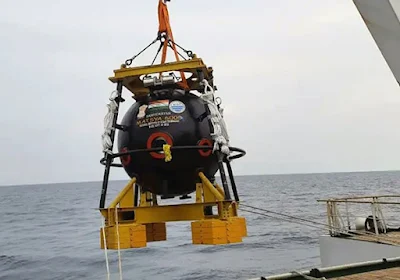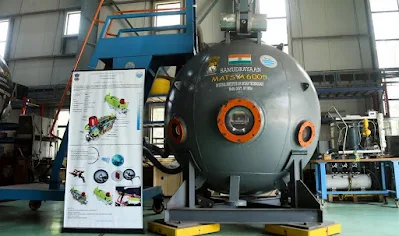Matsya 6000 Project
Deep Sea Explorers will
descend up to 6000 meters or 6 kilometers deep into the sea to conduct research
using the Matsya 6000, which was created by the Ministry of Earth Sciences and
the Indian Institute of Ocean Technology (IIOT). India's first manned
underwater mission is being watched closely by the entire nation. Therefore, we
made the decision to develop comprehensive mission information, including the
MATSYA 6000 launch date in 2023, the mission's goals, and the budget. The
MATSYA 6000 Submarine was created by oceanographers to transport them to the
sea bed for more research.
The vehicle for this
underwater endeavor would be the state-of-the-art submersible MATSYA 6000'. The
device, created at Chennai's National Institute of Ocean Technology, is
intended to transport three people. The expedition's main goals will be to
analyze marine biodiversity and perform extensive research on deep-sea
resources.
Objectives of Matsya 6000
project:
- A wide variety of significant
mineral resources, including polymetallic nodules and manganese crusts, are
also believed to be present. Indian scientists will be able to examine these
resources in unprecedented detail thanks to the Matsya 6000 mission. Metals,
fertilizers, and building supplies are just a few of the things that could be
made from these resources.
- A wide variety of unusual and unexplored marine species can be found in the deep water. In the deep water, researchers have found a number of novel marine life forms that could be utilized to create fresh medications and medical treatments.
- The deep sea is crucial to the functioning of the world's climate system. Scientists may be better able to comprehend the role of deep water in climate change as a result of the Matsya 6000 mission and create plans to lessen its consequences.
- Additionally, researchers are looking into how renewable energy sources like wave and tidal energy could be produced in the deep oceans. Additionally, a long-lasting tidal energy plant is intended to be built.
Features of Matsya 6000
- For the Deep Sea Exploration Mission, Matsya 6000 can carry three oceanauts and a variety of payloads.
- The MATSYA 6000 Submarine can operate continuously for 12 hours and in extreme situations, it may operate continuously for 96 hours.
- The MATSYA 6000 was tested close to Chennai and descended 600 meters into the sea. Following that, they confirmed the mission, and it would shortly be launched far out to sea.
Budget Matsya 6000 project:
- The project started in 2018 by developing a submarine. The budget allocated for mission is Rs 8000 Crores which will be spent across the span of 5 Years.
- The Matsya 6000 2023 Budget would be spent in its various phases in accordance with its needs.
This ambitious project is
important for India's growing economy and to provide the requirements of the most
populous country in the world.



